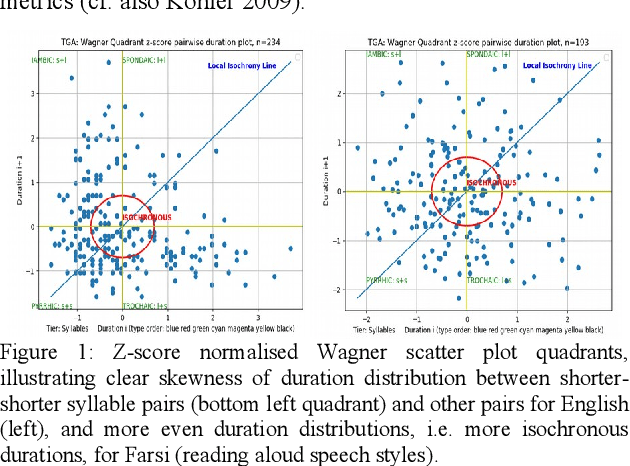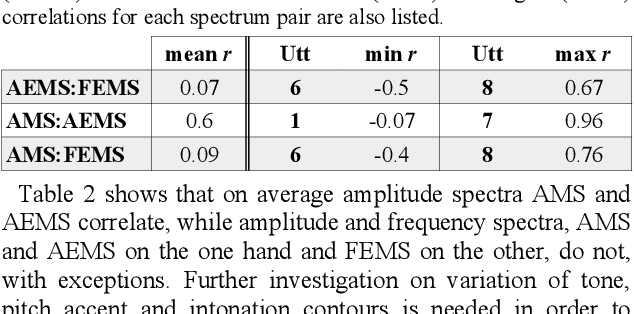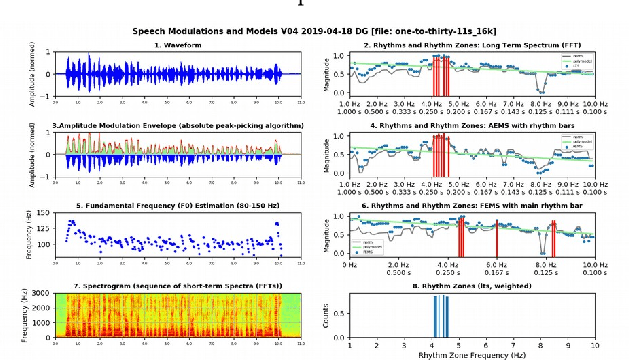Quantifying and Correlating Rhythm Formants in Speech
Paper and Code
Sep 03, 2019



The objective of the present study is exploratory: to introduce and apply a new theory of speech rhythm zones or rhythm formants (R-formants). R-formants are zones of high magnitude frequencies in the low frequency (LF) long-term spectrum (LTS), rather like formants in the short-term spectra of vowels and consonants. After an illustration of the method, an R-formant analysis is made of non-elicited extracts from public speeches. The LF-LTS of three domains, the amplitude modulated (AM) absolute (rectified) signal, the amplitude envelope modulation (AEM) and frequency modulation (FM, F0, 'pitch') of the signal are compared. The first two correlate well, but the third does not correlate consistently with the other two, presumably due to variability of tone, pitch accent and intonation. Consequently, only the LF LTS of the absolute speech signal is used in the empirical analysis. An informal discussion of the relation between R-formant patterns and utterance structure and a selection of pragmatic variables over the same utterances showed some trends for R-formant functionality and thus useful directions for future research.
 Add to Chrome
Add to Chrome Add to Firefox
Add to Firefox Add to Edge
Add to Edge